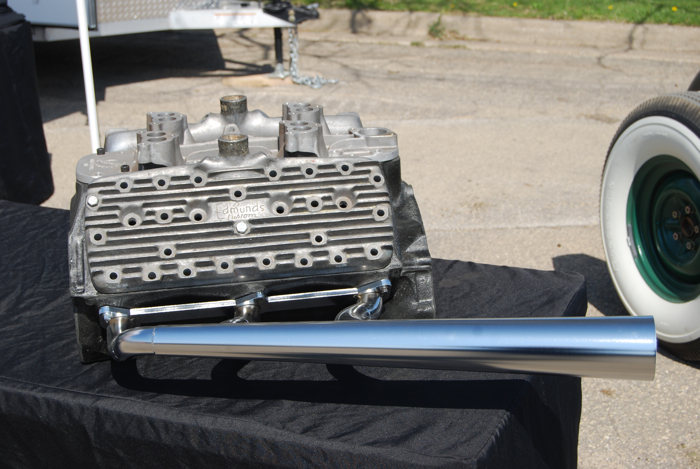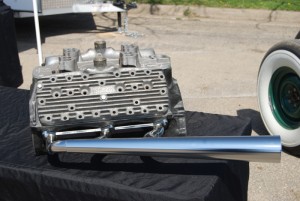
Have you heard the one about the hot rodder who walks into the engine shop and asks for exhaust headers for a 1928 Hudson he wants to race on the dry lakes? Matt Legare of Gear Drive (www.lakeheaders.com) in Minneapolis, will tell you, “no joke!” He actually built a set of Lake headers for an 87-year-old Hudson that was powered by a Ford 351 Windsor V8.
“I have headers for many engines in stock at my shop. I make a lot of different stuff for a lot of different applications that aren’t covered by the big companies,” Legare explains. “I specialize in headers for engines like the Ford Y-Block or the Buick Nailhead. I have all that stuff on my shelves. But in this case, that guy had to measure the whole car and then I built him headers according to his specifications.”
Engine Builder magazine ran into Legare at a traditional hot rod show called Vintage Torque Fest in Dubuque, IA. He was busy answering questions from dozens of car builders and engine builders. He told us that he sells a lot of his headers, all based on the style of headers used years ago by hot rodders who raced on the dry bed lakes in California such as El Mirage, Muroc, Harper and Rosamond.
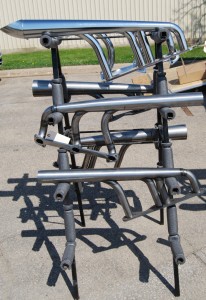
Legare says he has been building lake headers for about 15 years. “It all started when a friend of mine asked me to build him headers; I built them, then I built more and then I started listing them on eBay. After a few years, I was making enough of them to go at it full-time.”
Before building that first set of lake headers, Legare worked with a racing car team for around seven years. At first, he was a mechanic and fabricator. He says that years before that he “practically grew up” in the engine shop and machine shop where his dad worked. He also worked in a fabrication shop. “I did a lot of welding and cutting and building stuff without wrecking it,” he explained. “All of that experience came in handy for making headers.”
Legare said that he designs his headers using customer cars to take measurements from. He then uses those measurements to determine the length of the pipes and fitting that length into the car dictates the basic shapes he can work with. Over time he has realized certain things that play into the design end of his business. “For instance, you learn that if you put a Model A Ford and a small-block Chevy V8 together, they’re going to fit only one way,” Legare noted. “So, then you can go and do the same design over and over.”
Once he settled into the header business, Legare bought a collection of mandrel bends used to shape the tubes. “The cones are all pre-made,” he pointed out. “Laser shops chop off the flanges for me. Then, I just assemble everything from the parts; I have stacks of header fixtures at my shop. It’s just a matter of welding things together the right way.”
In addition to headers, Gear Drive is also staring to cast intake manifolds. “I just started casting those things again,” Legare says. “I had cast a four deuces manifold (an intake designed to carry four two-barrel carburetors) about eight or nine years ago and I just recently started doing it again when I made a six deuces manifold for an old Chrysler Hemi. Now, we’re also doing the DeSoto Hemi with six deuces, as well as four deuce and six deuce Cadillac intakes.”
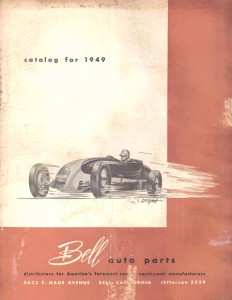
Legare knows his market and sells accordingly. He uses an Instagram account that uses one word “atgeardrive” to make it simple to remember. He also advertises in Hop Up magazine to promote his business. Hop Up is a revival of a hot rod magazine published in a 5×7-in. format in the early ‘50s. In addition, he attends traditional hot rod shows like Vintage Torque Fest that are aimed at “old school” hot rodders.
Asked if he was trying to be the modern equivalent of Bell Auto Parts (an early mail order supplier of hot rod parts), Legare assured us he wasn’t. “I don’t know if I’d go that far,” he said. “That’s a really prestigious name to old schoolers, but I’m just Matt from Gear Drive who sees a market that needs to be filled and I’ll try to fill it as best I can.”
Legare and Gear Drive have been riding the trend toward traditional hot rods upward, turning what started as a one-shot project to help a friend into a growing business. The unwritten rules say that a traditional hot rod or custom car has to be constructed just the way they were back before 1962. That means no small-block 350s or 302s, no Mustang II-style front suspensions and no chain link steering wheels. Cars have to be made of 100 percent pre-1962 vintage parts or exact replicas of them. Lake headers are an essential part of such a build.
Gear Drive doesn’t sell old headers—it manufactures brand new ones that look like old ones. In fact, the company’s motto is “We don’t just sell headers—We build them!” It’s not a large niche and the company has become the “500-lb. gorilla” in this market by turning out a quality product and using show promotions, social media and targeted print advertising to reach customers.
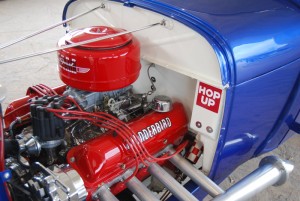
Building exhaust headers for hot rods and customs has its creative side too. When asked about the most interesting set of headers he’s made, Legare recalled a high-end customer who had installed a 429 Cobra-Jet V8 in a ’32 Ford roadster. “He just let me do whatever I wanted,” said Matt. “That was a fun car to do. Then there was the time that Tony Lombardi from Ross Racing Engines was building a Model A Ford with a 371 Olds Rocket V8, and that was also a fun set of headers to make because it turned out good.”

